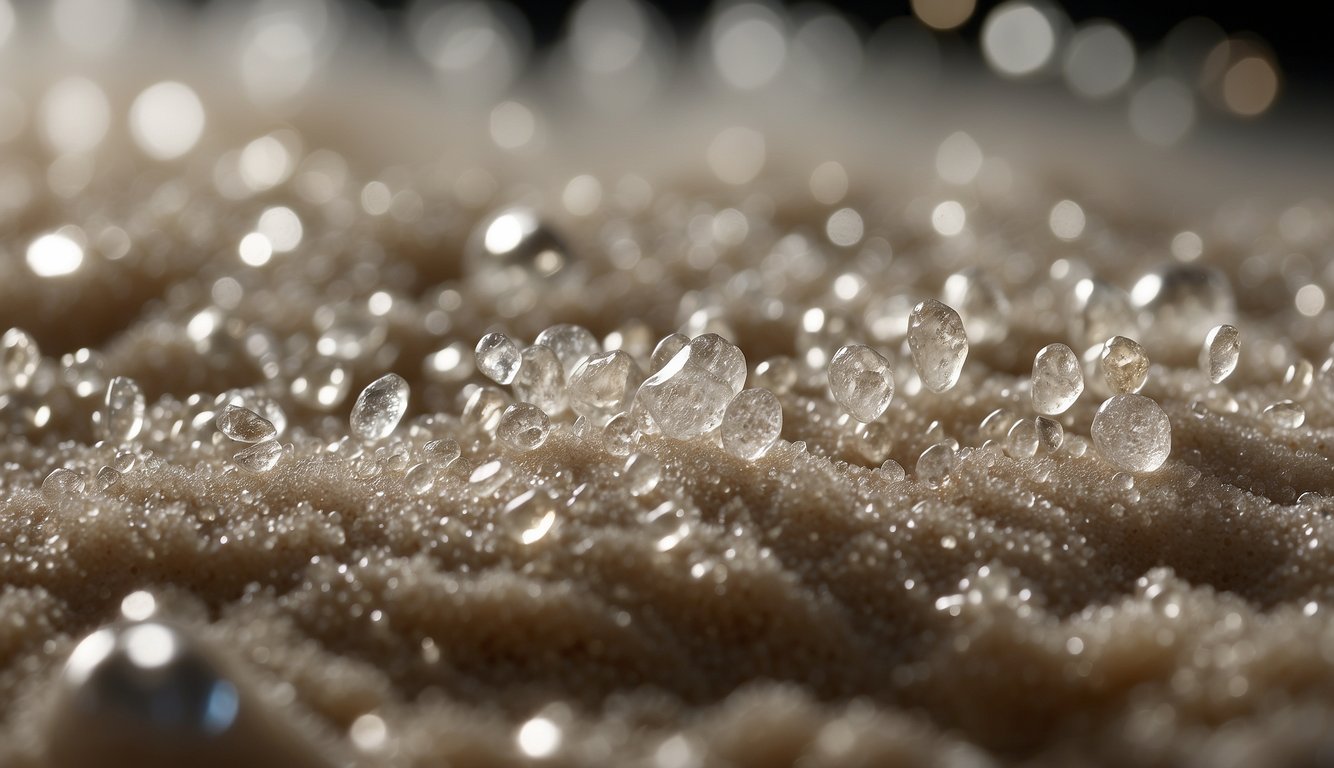TheHerbProf.com is a treasure trove of knowledge for those interested in natural healing and herbal remedies. The website is run by Paul Johnston MD. A naturopathic who has not only received extensive education in the field but also has personal experience in self-healing.
As a gardening enthusiast, I have come across diatomaceous earth wet in my pursuit of natural pest control methods. Diatomaceous earth is a fine, powdery substance made from the fossilized remains of diatoms, a type of hard-shelled algae. It is commonly used as an insecticide and can be applied both wet and dry. However, there are some differences between the two methods that gardeners should be aware of.
When using diatomaceous earth in a dry application, it is important to apply it evenly and generously to the areas where pests are present. The powder works by dehydrating the insects, causing them to die. However, the effectiveness of dry diatomaceous earth can be limited if it gets wet, as the water can wash it away and reduce its potency. On the other hand, wet application of diatomaceous earth involves mixing it with water to create a slurry that can be sprayed onto plants and surfaces. This method can be beneficial in areas where dry DE won’t stick, and it can also be easier to apply evenly. However, it is important to note that wet application may not be ideal for all locations and situations.
What Is Diatomaceous Earth?
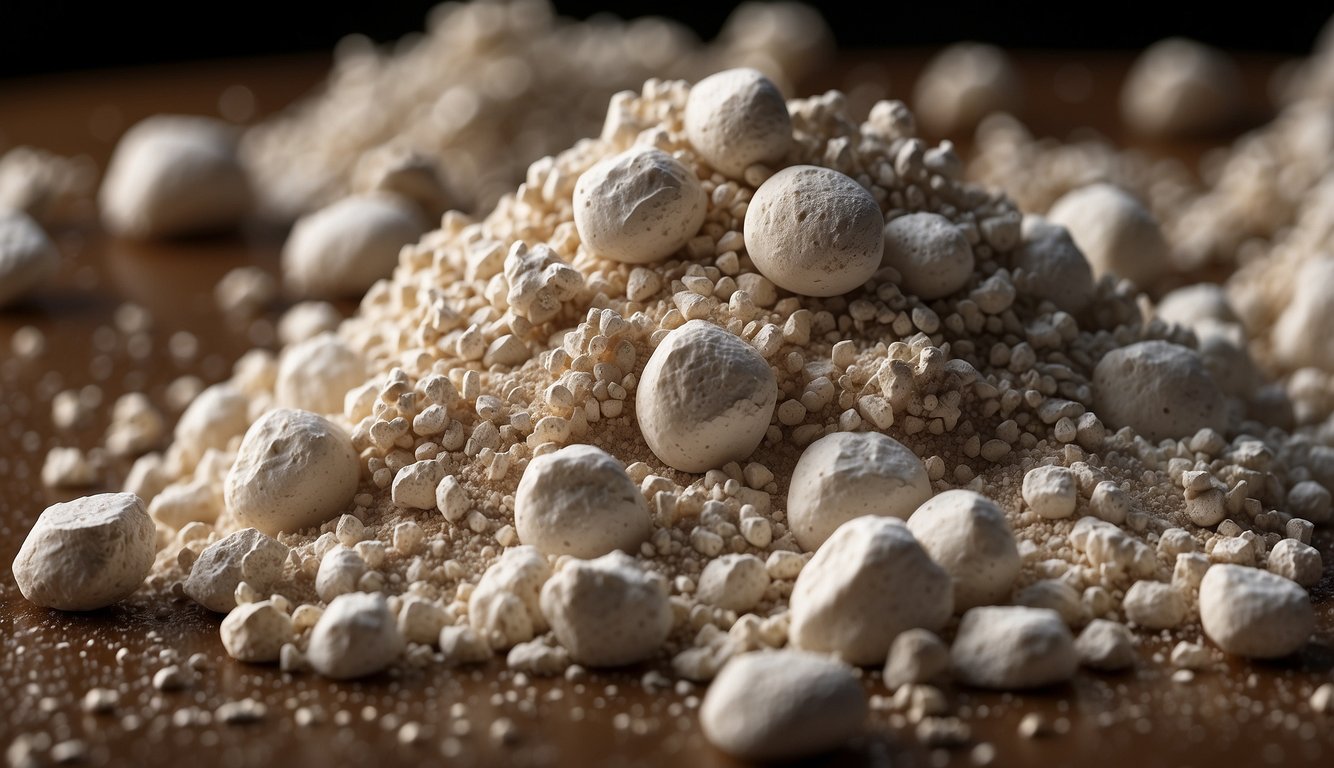
As someone who has used diatomaceous earth (DE) in both wet and dry applications, I can attest to its effectiveness as a natural pest control and household cleaner. But what exactly is diatomaceous earth? In this section, I will provide an overview of the composition and properties of DE, as well as the different types of DE available.
Composition and Properties
Diatomaceous earth is a sedimentary rock that is made up of the fossilized remains of diatoms, a type of hard-shelled algae that existed millions of years ago. These diatoms had a unique cell structure that was made up of silica, a natural substance that is also found in sand and quartz. Over time, the remains of these diatoms accumulated in the sediment of rivers, streams, lakes, and oceans, forming deposits of DE.
One of the unique properties of DE is its abrasive nature. The fossilized diatoms in DE have a microscopic structure that is sharp and jagged, which makes it effective at cutting through the exoskeletons of insects and other pests. This is why DE is commonly used as a natural pesticide and insecticide.
Types of Diatomaceous Earth
There are two main types of diatomaceous earth: food grade and industrial grade. Food grade diatomaceous earth is safe for human consumption and is often used as a dietary supplement or to purify water. It is also commonly used in food production as an anti-caking agent and to control pests.
Industrial grade diatomaceous earth, on the other hand, is not safe for human consumption and is primarily used in industrial applications, such as in the production of cement, paints, and insulation. It is also used as a filtration medium in swimming pools and aquariums.
When using diatomaceous earth, it is important to use the appropriate type for your intended application. Food grade diatomaceous earth should be used for any application that involves human or animal consumption, while industrial grade diatomaceous earth should only be used in non-food applications.
Wet Application of Diatomaceous Earth
Diatomaceous earth (DE) is a natural substance that is effective in controlling pests, including insects, mites, and ticks. Wet application of DE is an easy and effective way to apply the product to a variety of surfaces. In this section, I will explain how to prepare the wet mixture, the different application methods, and the safety precautions that should be taken when using DE.
Preparing the Wet Mixture
To prepare the wet mixture, you will need DE and water. The ratio of DE to water should be about 4 tablespoons of DE per gallon of water. Mix the DE and water in a container and stir until the mixture is well combined. You can use a spray bottle or a garden sprayer to apply the mixture.
Application Methods
There are different ways to apply the wet mixture, depending on the surface you are treating. For example, you can apply the mixture to plants by spraying it on the tops and undersides of leaves. You can also use the wet mixture as a cleaner around the house.
When applying the wet mixture, it is important to shake the container frequently to prevent the DE from settling to the bottom. This will ensure that the mixture is well-distributed and effective.
Safety Precautions
When using DE, it is important to take safety precautions to protect yourself from inhaling the dust. Wear a mask and gloves when handling the product, especially when preparing the wet mixture. Avoid applying the mixture on windy days to prevent the dust from spreading.
Wet application of DE is an easy and effective way to control pests and clean surfaces. By following the guidelines outlined in this section, you can use DE safely and effectively to achieve your desired results.
Dry Application of Diatomaceous Earth

As a natural and versatile pest control solution, diatomaceous earth can be applied in different ways depending on your needs. One popular method is dry application, which involves spreading the powder in its dry form.
Using Diatomaceous Earth in Dry Form
Dry application is ideal for treating large areas, such as gardens, lawns, and farms. It is also a convenient option when dealing with pests that hide in hard-to-reach places. To use diatomaceous earth in its dry form, you can:
- Sprinkle it with a flour sifter: This technique is useful when working indoors, around the house, or in tight spaces. A flour sifter helps you apply the powder evenly and avoid clumps.
- Use a garden duster: This tool is designed for outdoor use and can cover a larger area than a flour sifter. A garden duster typically has a long nozzle that allows you to reach under leaves, around stems, and in other nooks and crannies.
- Shake it from a shaker: A shaker is a container with small holes that dispenses the powder as you shake it. This method is useful when treating small areas or when you need to apply the powder in a controlled manner.
Dry Application Techniques
When applying diatomaceous earth in its dry form, there are a few techniques you can use to make the most of its effectiveness:
- Apply a thin layer: While diatomaceous earth is safe for humans and pets, it can still cause respiratory irritation if inhaled in large amounts. To avoid this, apply a thin layer of the powder and reapply as needed.
- Cover the entire area: Pests can hide anywhere, so it’s important to cover the entire area you want to protect. This includes the undersides of leaves, the soil, and any other spots where pests may be hiding.
- Reapply after rain: If you’re using diatomaceous earth in its dry form outdoors, it may get washed away by rain. To ensure continued protection, reapply the powder after each rainfall.
Dry application of diatomaceous earth is a simple and effective way to control pests and protect your plants. By using the right tools and techniques, you can apply the powder evenly and cover all the areas where pests may be hiding.
Diatomaceous Earth for Pest Control
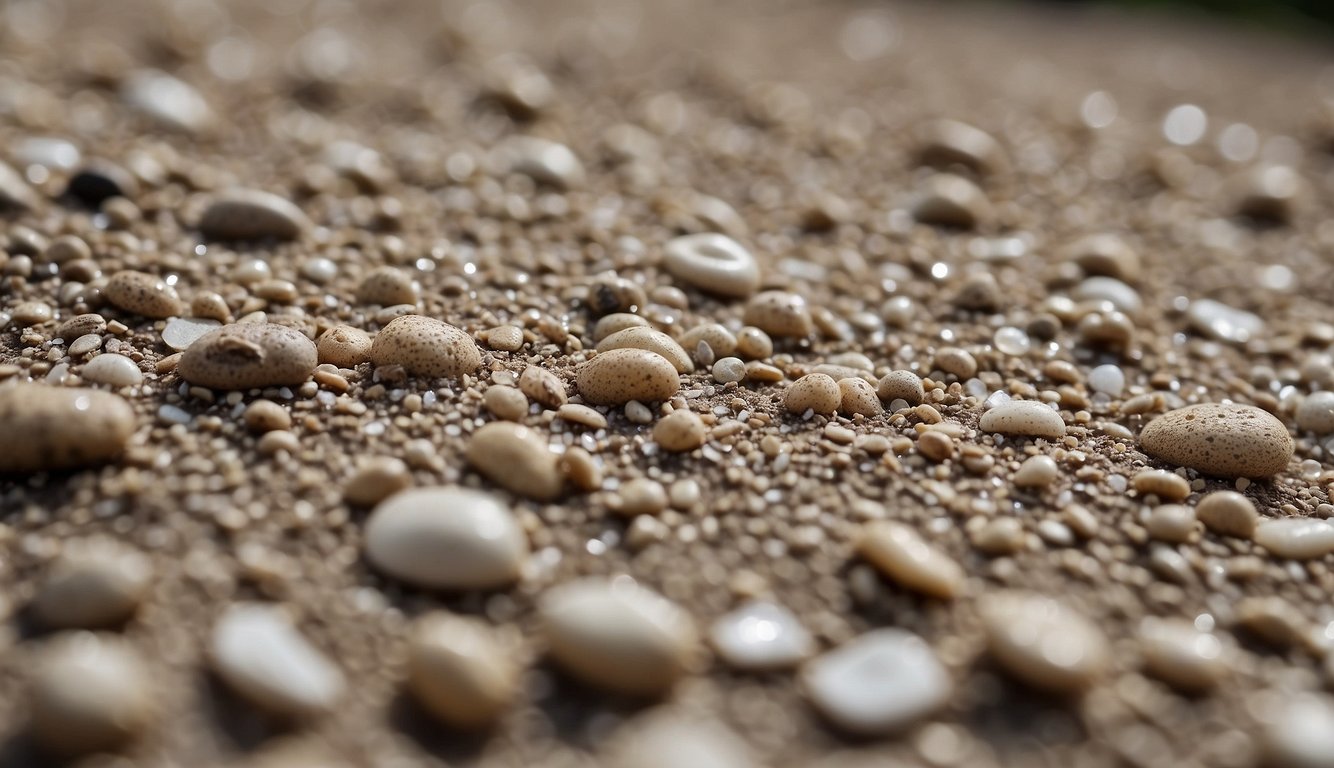
As an avid gardener, I have found that diatomaceous earth (DE) is an effective and natural pest control solution. DE is a powdery substance made from fossilized diatoms, a type of algae. It contains silica, which is abrasive to insects and other pests, causing them to dry out and die.
Effective Pests
DE can be used to control a wide range of pests, including ants, mites, fleas, roaches, aphids, beetles, worms, ticks, earwigs, silverfish, and other garden pests. It works by disrupting the pests’ exoskeleton, leading to dehydration and death.
When using DE for pest control, it is important to apply it evenly and thoroughly. I recommend using a duster or shaking it out of a container with small holes to ensure even coverage. Be sure to wear a mask and gloves when applying DE, as it can be irritating to the lungs and skin.
Protecting Beneficial Insects
While DE is effective at killing pests, it is important to remember that it can also harm beneficial insects, such as pollinators. To protect these insects, I recommend applying DE only to targeted areas and avoiding spraying it directly on plants.
DE is also effective when used as a barrier around plants to prevent pests from reaching them. This method can be especially useful for plants that are particularly susceptible to pests, such as tomatoes or peppers.
In summary, diatomaceous earth is a natural and effective pest control solution for a wide range of garden pests. When used correctly, it can be a valuable tool in maintaining a healthy and thriving garden.
Using Diatomaceous Earth in Gardens
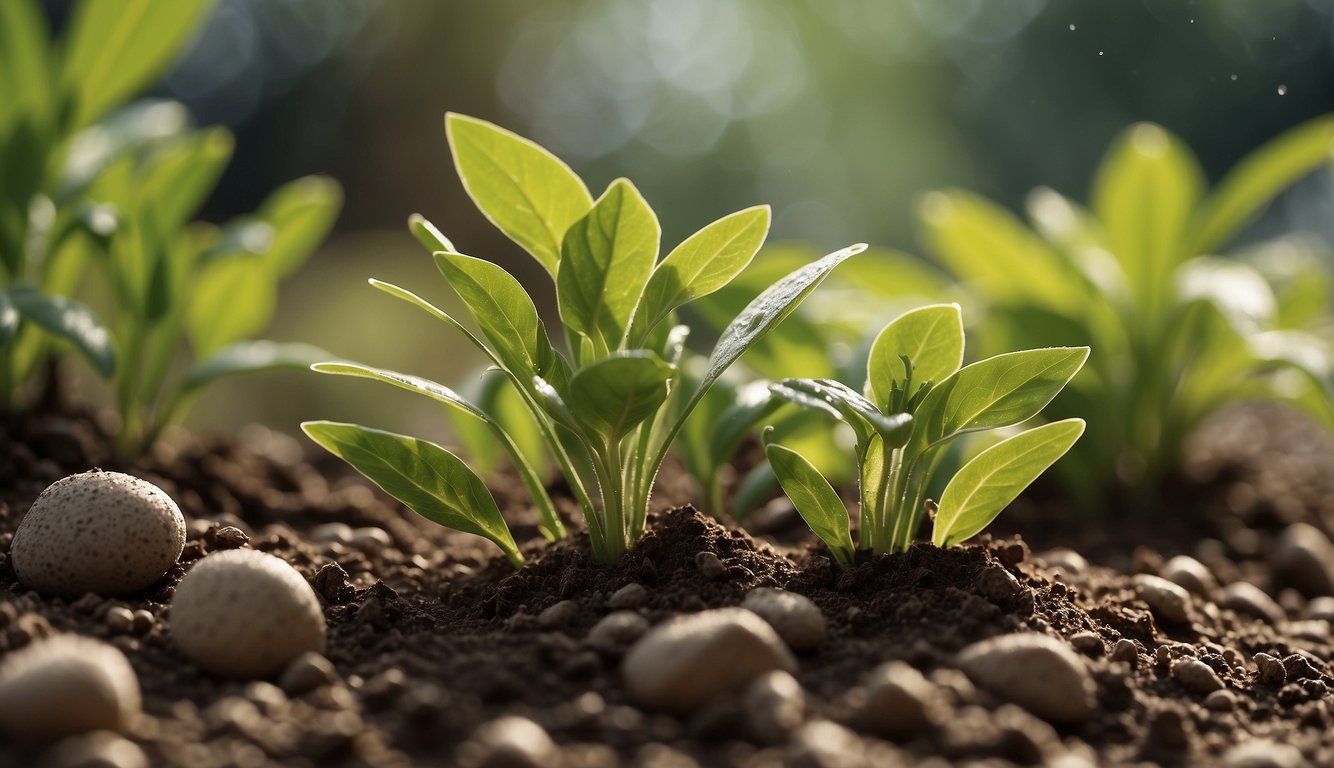
As a gardener, I have found diatomaceous earth to be an effective and natural solution for controlling garden pests. It is a fine powder made from the fossilized remains of diatoms, which are tiny sea creatures. Diatomaceous earth is safe for humans and pets, but it can be harmful to insects with exoskeletons, like aphids, slugs, snails, and mites. In this section, I will discuss how to use diatomaceous earth in gardens.
Application on Plants and Soil
The best way to apply diatomaceous earth to plants is to dust the infested areas with a thin layer of DE, particularly the undersides of leaves where garden pests tend to hide and reproduce. I recommend wearing gloves and a face mask to avoid inhaling the powder. You can also mix DE with water to create a slurry and apply it with a spray bottle or a pressure washer. Once you mix the DE in the water, the DE will settle to the bottom, so you need to shake it up frequently as you spray.
You can also apply DE to the soil around the plants to prevent pests from crawling up the stems. Sprinkle a thin layer of DE around the base of the plant or in a ring around the plant. Be careful not to apply too much DE to the soil, as it can dry out the soil and harm beneficial insects.
Weather Considerations
It is important to apply diatomaceous earth on a dry, windless day to avoid killing beneficial pollinators. Rain can wash away the DE, so it is best to apply it when there is no rain in the forecast. DE works best in moist conditions, so if the weather is dry, you may need to water your plants before applying the DE.
Diatomaceous earth is a safe and effective way to control garden pests. By following these tips, you can use DE to protect your plants without harming the environment.
Household Uses of Diatomaceous Earth
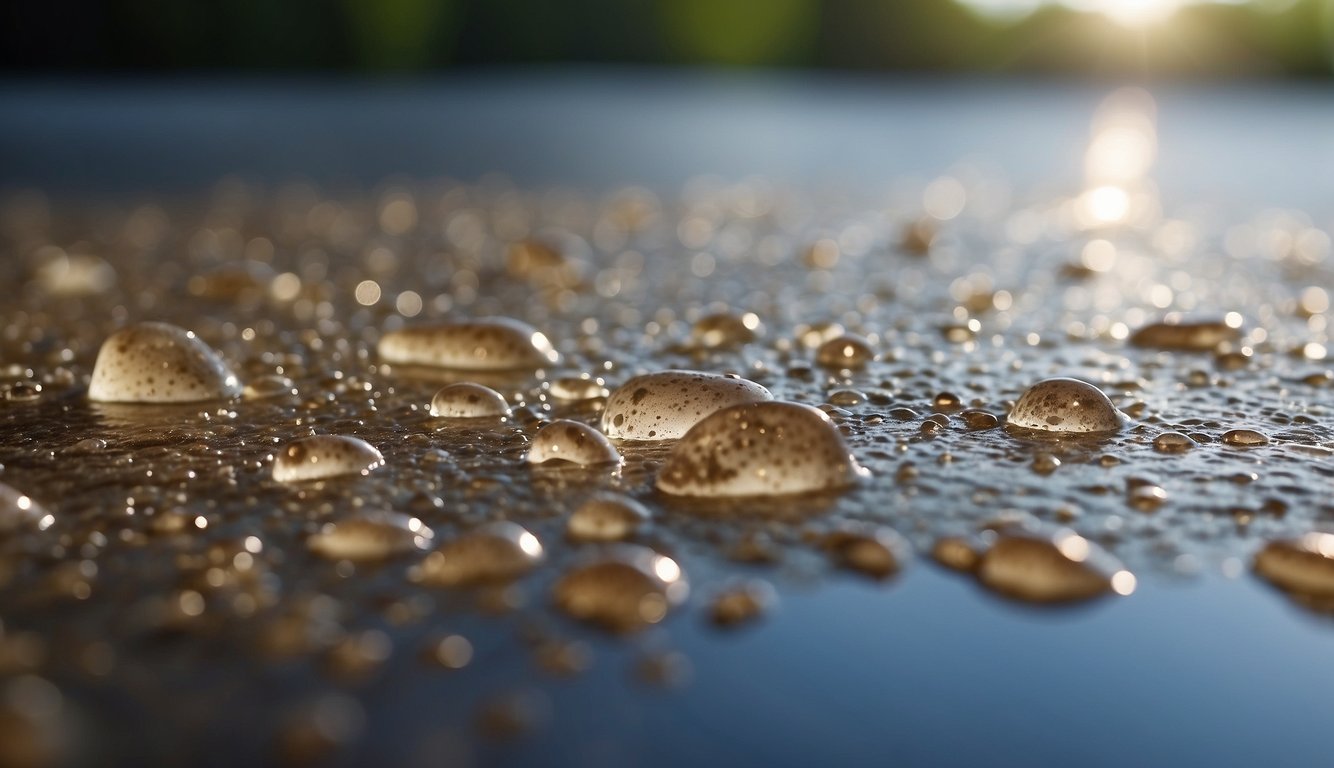
As someone who has used diatomaceous earth wet for a variety of household tasks, I can attest to its versatility and effectiveness. Here are a few ways you can use it around your home:
Indoor Pest Management
Diatomaceous earth is a natural and non-toxic way to manage indoor pests such as ants, roaches, and spiders. Simply sprinkle the powder in areas where you’ve noticed these pests, such as along baseboards, in corners, and around pet beds. The powder will stick to the pests’ bodies, causing them to dehydrate and die.
Cleaning and Deodorizing
Diatomaceous earth is also an effective cleaner and deodorizer. Mix it with water to create a paste and use it to scrub surfaces such as sinks, tubs, and toilets. The abrasive texture of the powder helps to remove grime and stains, while its natural deodorizing properties help to eliminate odors.
You can also use diatomaceous earth to freshen up carpets by sprinkling it over the surface and letting it sit for a few hours before vacuuming it up. This will help to absorb any odors and leave your carpets smelling fresh.
Around the house, diatomaceous earth can be used to absorb moisture and prevent mold growth. Simply sprinkle it in areas such as the garage or basement where moisture tends to accumulate.
Overall, diatomaceous earth is a versatile and effective household tool that can be used for a variety of tasks. Just be sure to use food-grade diatomaceous earth and follow the instructions carefully to ensure safe and effective use.
Health and Safety Considerations
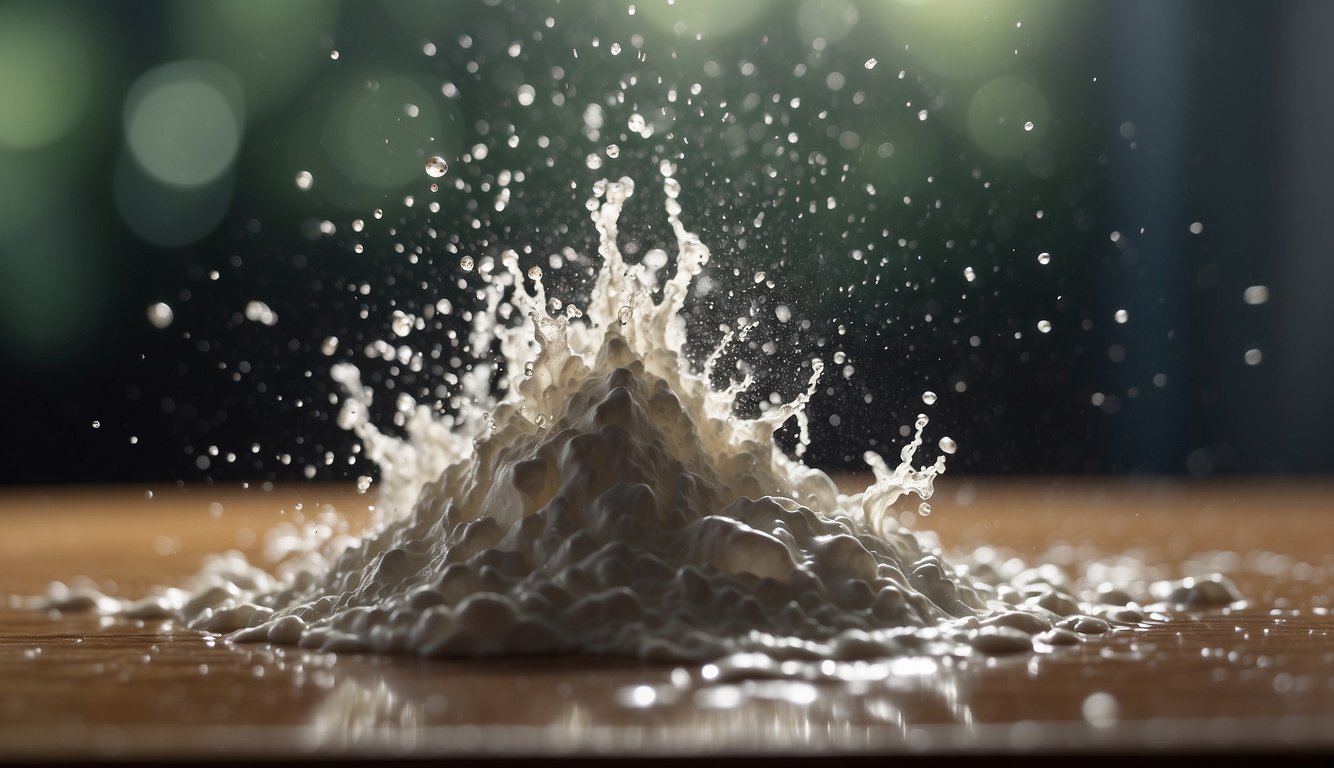
As with any substance, it is important to consider health and safety when handling diatomaceous earth, especially when it is wet. In this section, I will cover some of the most important considerations.
Personal Protection Equipment
When handling wet diatomaceous earth, it is important to wear appropriate personal protection equipment (PPE). This includes gloves and a face mask to protect against irritation and dust. A dust mask may also be necessary if the dust is particularly fine.
Safe Handling and Storage
When handling wet diatomaceous earth, it is important to follow safe handling and storage procedures. Store the substance in a cool, dry place, away from moisture. Keep it out of reach of children and animals.
It is important to note that diatomaceous earth is generally considered non-toxic to humans and animals. However, it can be irritating to the skin and eyes, so it is important to avoid contact with these areas. If contact does occur, rinse the affected area thoroughly with water.
Dehydration can also be a concern when handling diatomaceous earth, as it can absorb moisture from the skin. Be sure to drink plenty of water and avoid prolonged exposure to the substance.
Overall, while diatomaceous earth is a natural and effective substance, it is important to handle it with care and take appropriate precautions to ensure your safety.
Environmental Impact – Diatomaceous Earth Wet
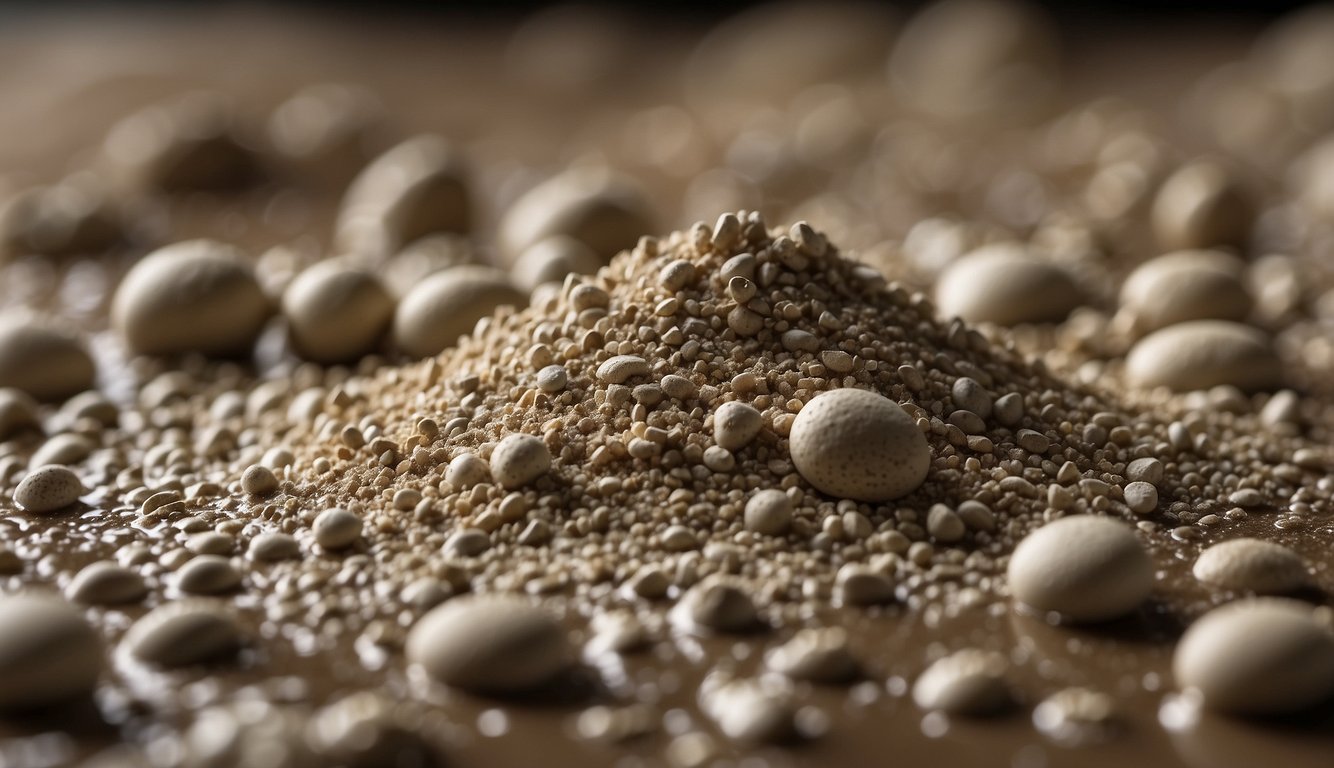
Eco-Friendly Pest Control – Diatomaceous Earth Wet
As a natural, non-toxic substance, diatomaceous earth is considered an eco-friendly pest control solution. Unlike chemical pesticides, DE does not leave harmful residues in the environment. It is also unlikely to cause long-term harm to non-target species, such as beneficial insects, birds, and mammals.
DE works by creating a protective barricade around plants, which helps to deter pests from feeding on them. This physical mode of action is not harmful to the environment, and does not interfere with natural processes such as photosynthesis.
Effects on Non-Target Species
While diatomaceous earth is generally considered safe for non-target species, it is important to note that it can still have some impact on the environment. For example, DE can be harmful to aquatic organisms such as fish and algae if it is allowed to enter waterways.
To minimize the risk of environmental harm, it is important to use diatomaceous earth responsibly. This includes following the label instructions carefully, avoiding excessive applications, and taking care not to contaminate water sources.
Overall, diatomaceous earth is a relatively low-risk pest control solution that can be a valuable tool for environmentally conscious gardeners. By using DE responsibly, it is possible to reduce pest damage without harming the environment or non-target species.
Diatomaceous Earth Wet
Today, we’re diving into the fascinating world of Diatomaceous Earth when it’s wet. Yes, that powdery stuff you’ve heard about has a wet side too!
Firstly, let’s talk about Diatomaceous Earth. It’s a natural, non-toxic substance made from fossilized aquatic organisms. It’s like a prehistoric party in a powder!
Now, the wet part. When Diatomaceous Earth gets wet, it doesn’t lose its effectiveness. It continues to work its magic, even in the rain!
And here’s a fun fact! Wet Diatomaceous Earth can be applied as a spray. It’s like a natural, non-toxic bug spray for your garden!
So, don’t worry if your Diatomaceous Earth gets wet. It’s still got your back!
For more earthy wisdom, do visit the website theherbprof.com. Keep it natural, folks!
References – Diatomaceous Earth Wet
Little Herb Encyclopedia, by Jack Ritchason; N.D., Woodland Publishing Incorporated, 1995
The Ultimate Healing System, Course Manual, Copyright 1985, Don Lepore
Planetary Herbology, Michael Tierra, C.A., N.D., Lotus Press, 1988
Handbook of Medicinal Herbs, by James A. Duke, Pub. CRP Second Edition 2007
The Complete Medicinal Herbal, by Penelope Ody, Published by Dorling Kindersley
Check the Following Articles!
Best Tasting Early Tomato Varieties for Your Garden
Weird Green Vegetables: Uncommon but Nutritious
Geranium Aroma: Benefits and Uses in Aromatherapy
Frequently Asked Questions – Diatomaceous Earth Wet

Can diatomaceous earth be used effectively indoors for pest control?
Yes, diatomaceous earth can be used effectively indoors for pest control. Wet applications of diatomaceous earth are particularly effective for indoor use, as they are distributed evenly and in just the right amount. Wet applications of diatomaceous earth are best for warm and dry locations, and there may be some limits to this method’s application. While not the perfect way to apply for all situations, it is certainly one of the easiest.
Which pests can be eliminated with diatomaceous earth applications?
Diatomaceous earth is effective against a wide range of pests, including ants, bed bugs, cockroaches, fleas, and ticks. It works by dehydrating the pests, causing them to die. It is a safe and natural alternative to chemical pesticides.
Is it possible to create a diatomaceous earth spray mixture for application?
Yes, it is possible to create a diatomaceous earth spray mixture for application. To make a diatomaceous earth slurry, mix ½ cup of diatomaceous earth with 2 cups of water. You can apply the slurry with a spray bottle or a pressure washer. Once you mix the diatomaceous earth in the water, the diatomaceous earth will settle to the bottom, so you need to shake it up frequently as you spray.
How does moisture affect the efficacy of diatomaceous earth?
Moisture can reduce the effectiveness of diatomaceous earth. When diatomaceous earth gets wet, it loses its ability to dehydrate pests. However, wet applications of diatomaceous earth are effective for indoor use, as they are distributed evenly and in just the right amount.
What is the correct ratio for mixing diatomaceous earth with water for pest control?
The correct ratio for mixing diatomaceous earth with water for pest control is ½ cup of diatomaceous earth with 2 cups of water. This mixture is commonly known as a slurry. You can apply the slurry with a spray bottle or a pressure washer.
Can diatomaceous earth be used safely on plants, and how does wetting it impact its use?
Diatomaceous earth can be used safely on plants, but it is important to use it correctly. Wetting diatomaceous earth can impact its use on plants, as it can reduce its effectiveness. When using diatomaceous earth on plants, it is important to apply it dry and avoid getting it on the leaves.
